The British Museum in London contains many of the most amazing artifacts ever discovered. It was here that Britons, and their armies, sent the prizes that they discovered in their travels around the world. In this article, we’ll examine some of the fascinating ancient artifacts that relate to the history contained in the Bible.
The Flood

This tablet was discovered in 1872 by George Smith, and while it is dated around 650 B.C. it is only a copy of a much older original. It is considered by many to be the most famous of all cuneiform tablets deciphered to this date. It tells the story of Gilgamesh, who is seeking immortality. In this story, Gilgamesh meets the hero – Utnapishtim – who gained immortality by surviving a great flood. The similarities between this legend and the Biblical account of the flood are striking. Utnapishtim tells how the god Ea commanded him to build a great boat on which he was to bring his family and representatives of all other living creatures to save them from the flood. They alone survived – everything else perished in the terrible deluge. At the end of the flood, Utnapishtim sent out a dove, swallow, and raven, and the raven does not return. He, his family, and all the animals leave the boat on Mount Nisir and he offered sacrifices to the gods.
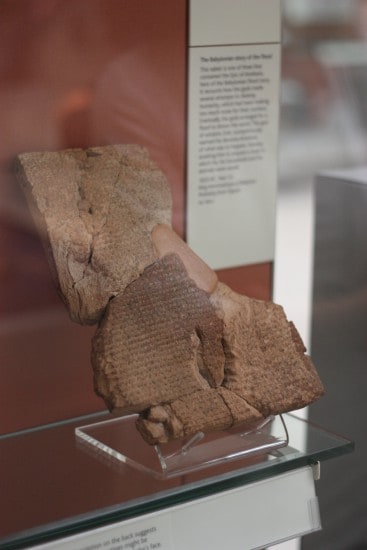
The Epic of Atrahasis is another example of the many flood legends that can be found among the ancient documents of the world. This tablet dates to around 1635 B. C. – after the time of Abraham. In this story, the reason for the flood was that mankind was giving the god Enil a headache… The hero Atrahasis is warned of the flood in advance and escapes with his family and the animals on a boat. Like Utnapishtim, he too offers sacrifices after leaving the boat.
There are over two hundred different cultures which recount a story of the flood – showing the universality of this account. But when we look at these legends which have been handed down over generations, we see a great difference between them and the account in Genesis. They were written down in story telling form, with added embellishments, and in a fantastical style. There is no significance, no compelling message in these stories, but in the Word of God, the account of the flood is actually foundational to the rest of history. It teaches of man’s sin, of God’s hatred and judgement of it, and also of His mercy and faithfulness. It is of great theological import, and significantly affects the way we live today. It is the true historical record, inspired by God himself – and we can wholly rely on its veracity.
Sodom and Gomorrah

This collection of pottery was excavated from a tomb in the archaeological site of Bab edh-Dra, which is believed by some to be none other than the city of Sodom (referred to multiple times in Genesis, the destruction being documented in chapter 19.) Bab edh-Dra and Numeira are the only known inhabited towns in the region of the Dead Sea between ca. 3300 and 900 B. C. Both show evidence of destruction by fire, and the similarity in the pottery found there indicates that they met their end at around the same time. Numeira was never again reoccupied, and while there was a short occupation at Bab edu-dra not long after its fall, it was almost exclusively outside the fortifications of the destroyed town. After this, both cities were permanently abandoned. When they were studied at first, it seemed that the destruction had been caused by a volcanic eruption. But when geologist Frederick G. Clapp came to investigate, he found no evidence of lava or ash eruptions occurring within the last 4000 years. he concluded that combustible materials from the earth were the cause of the destruction. He found bitumen, petroleum, natural gas, and sulfur (Genesis 19:23).
Bad edh-Dra is the larger of the two sites – the fortified area is estimated at having been 9 – 10 acres large. Most likely this was the more famous and prosperous city of Sodom. The site is badly eroded, but enough evidence remains in several areas to show the terrible disaster. The northeast gate of Bab edh-Dra was clearly destroyed by fire – indicated by charcoal, broken and fallen bricks, and areas of ash. The city walls were fallen, apparently after being burned by a large conflagration. The evidence of a fiery end is even more clearly seen at Numeira, as the site is better preserved. A thick layer of burnt debris was found in almost every area that was excavated. There was a great collapse of walls and structures throughout the city and a large amount of carbonized materials. Both of the cities are located on a fault line, and both show evidence of an earthquake being part of the destruction. A possible explanation for the destruction of the cities is that the pressure from the earthquake caused the underground flammable products of the land to be forced up through the fault lines, ignited and then rained down upon the cities. It is exciting to see both archaeological and geological evidence that corresponds with the Biblical account in Genesis, but truly the Bible needs no evidence to prove it. It stands on its own as the infallible Word of God – and He is the ultimate authority.
Conquest of Canaan
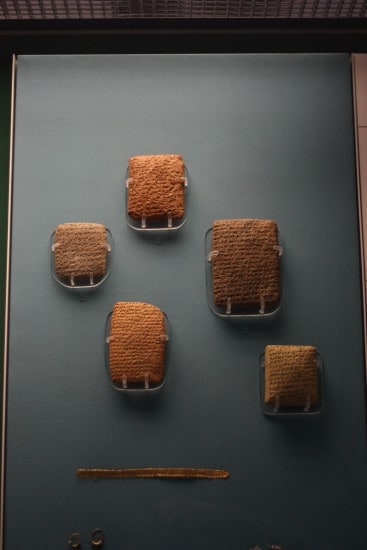
These are some of the Amarna letters, a large group of letters sent to Amenhotep III and IV in the declining years of Egypt, from various subject-rulers in Canaan. A significant number of these letters are the rulers asking for protection and complaining about the growing strength of nomadic groups, including the Hapiru people. There are letters of from Urusalim – Jerusalem – pleading for help, telling how the Hapiru are invading, and the king’s land is being lost. For those who follow the stricter interpretation of the Biblical timeline, these letters date from around the time of Joshua’s conquest of Canaan. Could the Hapiru be the Hebrews? It seems quite possible that is the case.
Shalmaneser III
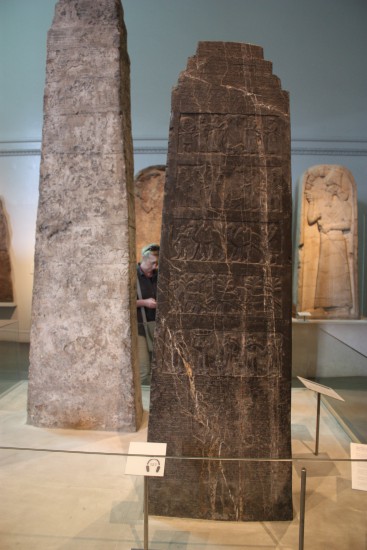
This black limestone obelisk recounts the victories of the Assyrian king Shalmaneser III. Part of it describes the defeat of Ben-Hadad and Hazel (2 Kings 8:7-15) and shows rulers of the subdued nations bringing tribute before their conqueror. In the second row of the obelisk (shown below) there is a kneeling figure in Israelite clothing, with the inscription of “Tribute of Yaua, son of Humri: I received silver, gold, a golden bowl, a golden vase with a pointed bottom, golden tumblers, golden buckets, tin, a staff for a king, spears.”
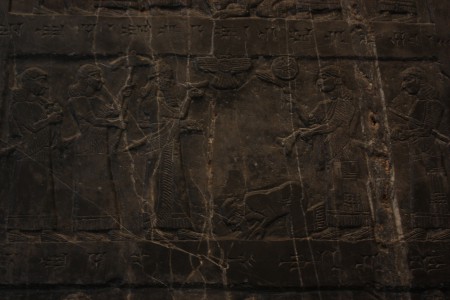
Yama, son of Humri is most likely Jehu, king of Israel. While Jehu (2 Kings 9) is not the son, nor technically a descendant, of Omri, he was fourth in line from King Omri. Also, Assyrians often referred to Israel as either mat-Humri (land of Omri) or bit-humeri (house of Omri). It is very likely that the kneeling figure in the carving is Jehu himself. It seems that Jehu attempted to buy the protection of Shalmaneser by paying him homage. This is considered to be the first known depiction of an Israelite King.
Tiglath Pileser III

This wall relief depicts Israelite captives being led into exile after the defeat of the Northern Kingdom in 732 B.C. by Tiglath Pileser III. He is also known as Pul (2 Kings 15:19) and is depicted here in his chariot. He claimed to have dethroned the Pekah king of Israel, and replaced him with Hosea (2 Kings 15:29-30). Probably to avoid anything like that happening to him, Ahaz, King of Judah sent tribute to him and became his vassal (2 Kings 16:7-10).
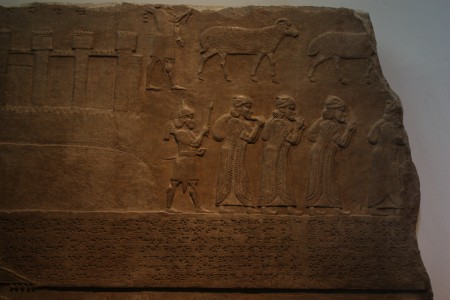
Sennacherib & Hezekiah
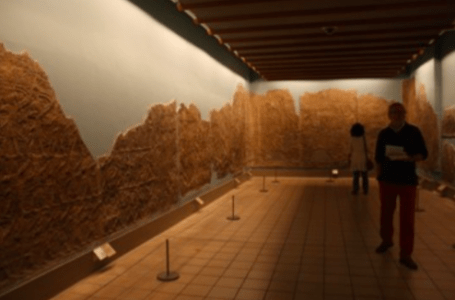
This room houses the wall relief of the siege of Lacish. It was the first archaeological confirmation of an event in the Bible. It is significant that these reliefs adorned the walls of Sennacherib’s victory room in his palace, and not the siege of Jerusalem, which would have been a more significant conquest, had he been victorious. You can take a 3D walkthrough of this room on Google Street View to examine the reliefs in greater detail.
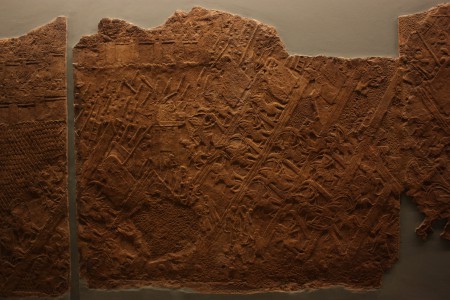
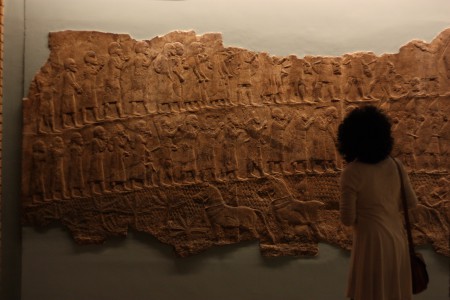

The huge, detailed wall relief is fascinating to study, it has been deemed the finest portrayal of ancient siege warfare. It is amazing how intricate and precise the mural is – from the grapes and figs on the trees, indicating the conquest was during summer, to the firemen with water ladles accompanying the siege engines.
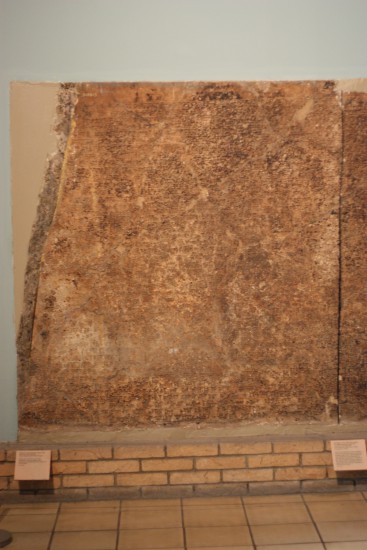
This is part of an inscription under the pair of large statues which flanked the entrance to the throne room in Sennacherib’s palace at Nineveh. It is the most detailed surviving account of the tribute Hezekiah sent to Assyria after Sennacherib’s campaign in Palestine. One other interesting thing about this mural, is that it is blackened. In the book of Nahum (1:10, 2:13, 3:13-15) there is a prophesy against Nineveh, that it would be destroyed by fire and water, because of its apostasy. In another artifact (not on display) called the Babylonian Chronicle, we hear of the Babylonian conquest of Nineveh in 612 B.C. They first set fire to the palace, and then opened up the Khoser river and flooded it.

This inscription describes Sennacherib’s conquest of Babylon and of Judah. In it, he boasts about how his army surrounded Jerusalem all around, and yet fails to explicitly speak of its fall. The capture of the capital city of a kingdom would surely receive a detailed description… However we know from the accounts in 2 Kings, 2 Chronicles, and Isaiah, that Sennecharib’s army actually suffered a humiliating defeat at Jerusalem, not at the hands of the Israelites, but by the supernatural working of God Himself. The Taylor Prism also references King Hezekiah.
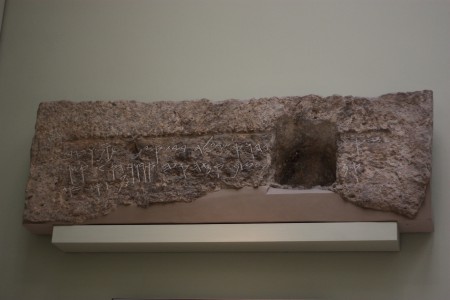
This lintel is from a rock cut tomb near the city of Jerusalem. It was carved from limestone, and is much damaged, but the inscription is still readable – “This is … [the tomb of Shebna] …iah, the royal steward. There is no silver or gold here, only … [his bones] … and the bones of his maidservant with him. Cursed be the man who opens this.” Shebna was the steward of Hezekiah and is directly spoken to, in Isaiah 22:15-25. He is condemned for carving out a resting place for himself in the rock – and told that he will be replaced by one who cares for the people and not himself. It seems that his desire to be left undisturbed was not fulfilled.
Nebo-Sarsekim

This administrative Babylonian tablet lists the name of officer Nebo-Sarsekim who is mentioned in Jeremiah 39:3. According to Jeremiah, this Babylonian official was at the siege of Jerusalem in 587 B. C. with Nebuchadnezzar II.
Belshazzar
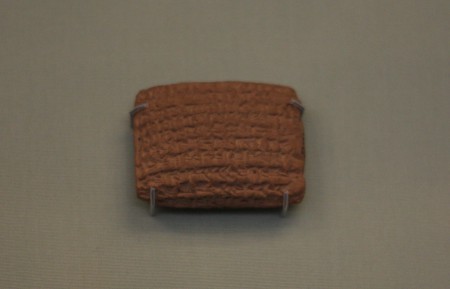
This is yet another administrative Babylonian tablet – from the reign of King Nabonidus. It also mentions his son Bel-sharra-utsur – who is none other than Belshazzar, the last of the Kings of Babylon. It is dated to the 24th day of Kislimu in the 11th year of the reign of Nabonidus.
Cyrus the Great
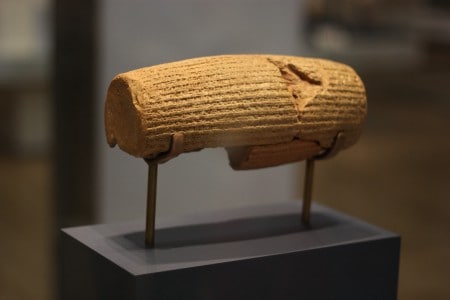
Before the discovery of the Cyrus Cylinder, the accounts of Ezra and Nehemiah speaking of Cyrus allowing the Hebrew exiles to return to Jerusalem, were doubted. It seemed highly unlikely that an allowance for a captive people to leave his kingdom, return to their own, and rebuild their temple would be made by the great king of Persia. However, the Cyrus Cylinder silenced the doubters by proclaiming precisely that.
Darius I
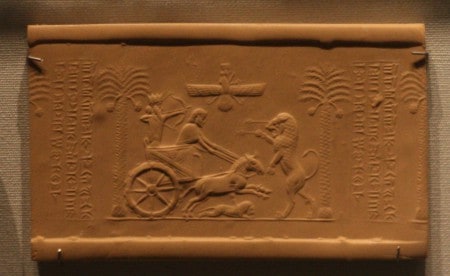
This ornate panel came from the palace at Susa of Darius I, it depicts a guard on duty. Darius is referred to multiple times in the Prophetic books of the Old Testament. Some references are Ezra 4:5, 5:6-7, 6:1 Nehemiah 1:22, Haggai 1:1, Zechariah 1:1, Daniel 5:31, 9:1, 11:1. He was used by the Lord to rebuild he city of Jerusalem – allowing Ezra to return and repair the ruins with a large number of Israelites. His son was Ahasuerus – the king who married Esther. This panel would most likely have been seen by Esther and Nehemiah – as they both lived in the palace at Susa. It gives us an idea of how the royal guards in Esther 2:2 could have been dressed.
Xerxes I
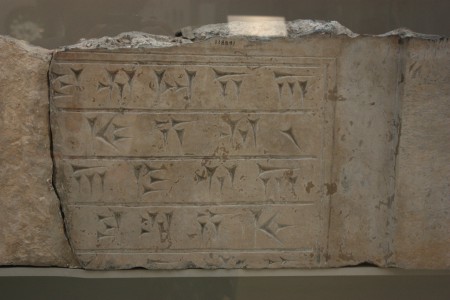
This is a fragment of a limestone relief from the audience hall in the palace of Persepolis. It is an inscription in honor of Xerxes – claiming he is the one king over many kings, established by the creator god Ahuramazda. Xerxes is identified as Ahasuerus – the king who made Esther his queen, thus enabling her to save the Jews from destruction.
Artaxerxes I
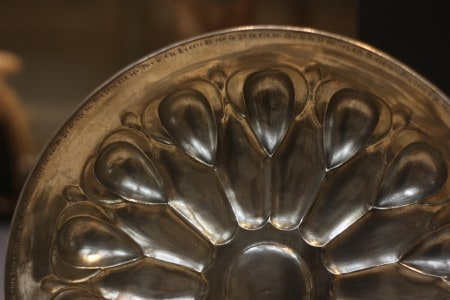
The inscription on the edge of this bowl, states that it was made for Artaxerxes. It had a special design – when filled up to the shoulder, it could be balanced on one hand. Nehemiah was the cupbearer to Artaxerxes I, and it is possible he handled this very bowl while in service to the king.
New Testament
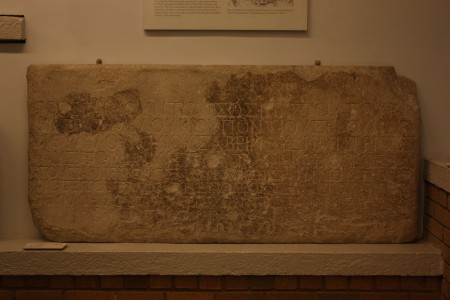
Before the discovery of this large stone inscription, the Greek word πολιτάρχης was only found in Acts 17:6-9. The fact that this word for official had not been seen in other writings, was used to discredit the authenticity of the Bible. But in 1876, this slab from Thessalonica was discovered to have the same word written on it, and the critics were silenced.
Conquest of Jerusalem
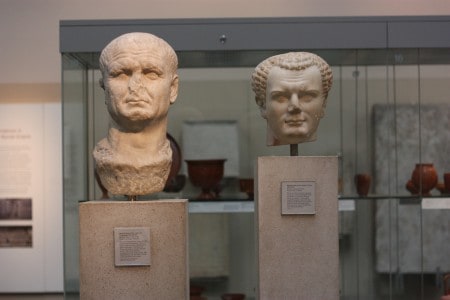
These two statues are of Vespasian and Titus, the father son pair who also became Roman emperors. Some perspectives on the book of Revelation hold that many of its prophecies refer to the fall of Jerusalem to the Romans in 70 AD. Vespasian and Titus were the Roman generals who captured the city.
Further Reading
The Discovery of the Sin Cities of Sodom and Gomorrah
Through the British Museum with the Bible by Brian H. Edwards and Clive Anderson
Heritage of Evidence in the British Museum by Peter Masters



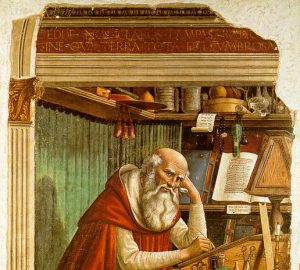
Amazing artifacts. Hope to see them up close this November when I will be in the U.K.
You Cannot argue with History 🙂
And talking of History. That’s HIS Story. The Almighty Himself. Yahweh/Jehovah.
Wonderful. Thank you very much
amazing
very very useful and wonderful efforts